I’m just back from two weeks excavations on the deserted island of Inishark, Co. Galway, situated just west of Inishbofin – one of the most westerly outposts of Ireland. Next parish: Newfoundland. Since 2010 I have been privileged to be a team member of an annual archaeological and historical survey of the island as part of the Cultural landscapes of the Irish Coast Project (CLIC) led by Professor Ian Kuijt, Note Dame University. This years archaeological excavations were directed by Franc Myles, one of the most experienced (and funniest) field archaeologists in Ireland.
Inishark (Inís Airc) was once home to several hundred people at the height of its settlement during the 19th and early 20th century – which had sadly dwindled to just 24 islanders when it was finally evacuated on the 20th October 1960. Like many other islands, the famine and successive bouts of economic depression, poverty and emigration took its toll on the native population. It never had electricity, modern communication or running water and unlike many others, was completely isolated for weeks on end during bad weather and winds.
Despite the hardy nature of the islanders themselves – some of the best boat people in the country (they had to be – nine miles out in the North Atlantic Ocean) – their basic living conditions and lack of emergency medical attention were such that they were eventually resettled on the mainland. Their story, and that of the island is perhaps best known to Irish audiences from the fantastic TG4 documentary from a few years back –
Today, 50+ years after evacuation, the entire island is a relict landscape of a once vibrant community – now abandoned and ever so slowly being reclaimed by the earth. Field walls and stone houses stand in various states of dereliction; the lumps and bumps of lazy beds, turf racks and kelp kilns bear silent witness to the islanders self-sufficiency. Stones peeking out of the earth tell tales of eking a living from the earth. A frozen landscape, fossilized in time and space – slowly sinking beneath the weight of its own sad echos and the ever-present natural erosion from the merciless Atlantic Ocean.
And yet, it is only one of several landscapes. The topography of Inishark exists as a palimpsest containing older echos of past habitations and abandonment – early Christian monastic ruins, dispersed medieval pilgrimage stations, prehistoric field systems – all bearing witness to successive generations and stories. Today, the island of Inishark may be silent once again, with only the utterances of sheep, snipe and corncrakes to break it – but its soil still has much to tell us.
And so, I thought I’d put together a few pictures to give you a flavour of just some of the magic of camping and working on an abandoned island (in fabulous weather!). For a week or two, the island is communally ‘lived in’, so to speak. Human voices bounce off walls, lobster pots are set (No, really!), sunsets and sunrises are beheld and light (from our camp fire) can once again be seen to the west from Inishbofin.
One of two notices erected in recent years. Sadly, the one by the harbour didn’t survive the winter storm. This one is inside St. Leo’s Church. Indeed, much of the ruined stone rubble harbour (which was already ruined anyway) was substantially impacted upon by this years series of winter storms. Rocks and slabs of several tonnes being thrown about like paper. Awe inspiring power of the sea.
One of the first few days on Inishark, this year, and our only really bad weather. We had to bring forward our arrival date to stay ahead of some squalls. The second night, one of my tent poles actually snapped in the wind. Thankfully, we had the presence of a bona fide modern-day grizzly adams type Canadian hiking guide with us (Cheers Steve!) who did a MacGuyver job on it and all was well afterwards.
After the initial weather, a high seems to have settled right on top of us for most of the two weeks – allowing us some serious magic hour moments after dinner.
Many of the stone houses have lost their original outer render by now, and yet are still standing tough. It allows us to see each individual stone as placed and used by the islanders. Above is a close up detail of one such house wall, with a possible reused medieval shouldered cross, spotted this year by Prof Kuijt.
The medieval church (St. Leo’s Chapel) being the largest and hardiest surviving building on the island becomes our field kitchen for the duration of our stay. Linda Martellaro of Notre Dame is the chef extraordinaire and is the heartbeat of the entire operation. There are chains of restaurants with dozens of staff who could not produce such wonders as she does – with very basic cooking equipment.
Above: The exterior of St. Leo’s Church, at the centre of the islands only village – nestling into Cnocán Leo (Leo’s Hill). You can see original medieval stonework where the render has fallen off.
Above, some photos of Inishark graveyard, one of my favourite locations on the island. Littered with headstones and lintel styled graves. Sadly, some significant ground was lost in recent winter storms. We conducted a new survey of the graveyard and its coastal erosion this season.
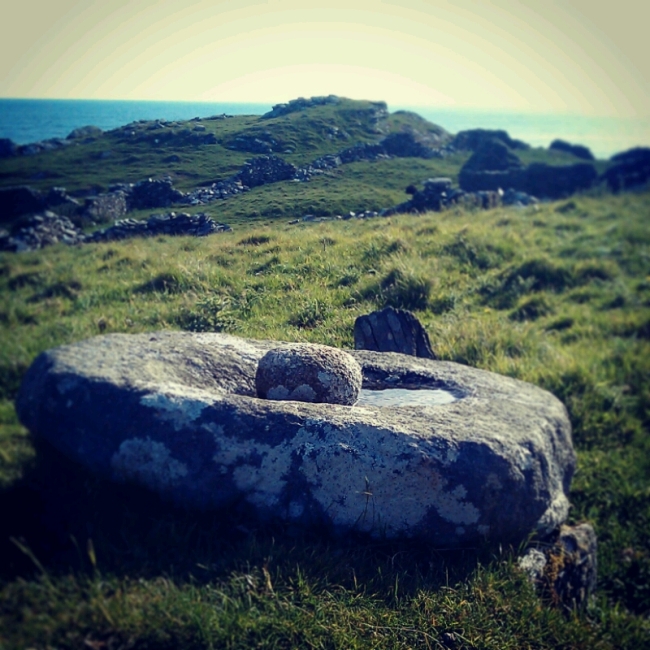
‘Leaba Leo’ (Leo’s Bed), a Leacht and Bullaun stone on top. Clochan Leo (Large Beehive hut in a stone enclosure in background) (Image: Author)

Surveying remains of a possible medieval leacht on the summit of Cnocán Leo (Leo’s Hill). Misty morning mainland in background. (Image: Author)
Above: some of the surviving medieval pilgrimage archaeology of Inishark. Clochán Leo’s lower levels survive in a reasonable state. It was so fine that I managed to spend a night inside in my sleeping bag – which will be the focus of a future post. I was treated to a stunning sunrise at 4ish in the morning. I really don’t have the words…

The gap toothed silhouette of another prehistoric wall base on a ridge. There are several prehistoric field systems exposed from centuries of turf cutting. (Image: Author)

Prehistoric Wall base, western Inishark. Village in background. Twelve Pins on mainland behind. (Image: Author)
Above: Some of the prehistoric wall/field systems on the western side of the island – exposed after years of turf cutting. Always a pleasure to hike over to them. In particular, I am always struck by the almost complete absence of enclosure. With the exception of the above walls, there are no modern land divisions. One gets a real sense of what late prehistoric/early medieval Ireland must have looked like, out beyond the major settlement areas – on the ‘open range’ or boggy diserta (‘deserts’) scrublands.

One of many Turf Racks dotted throughout the western end. The islanders only supply of regular fuel was the bog on this side of the island. (Image: Author)
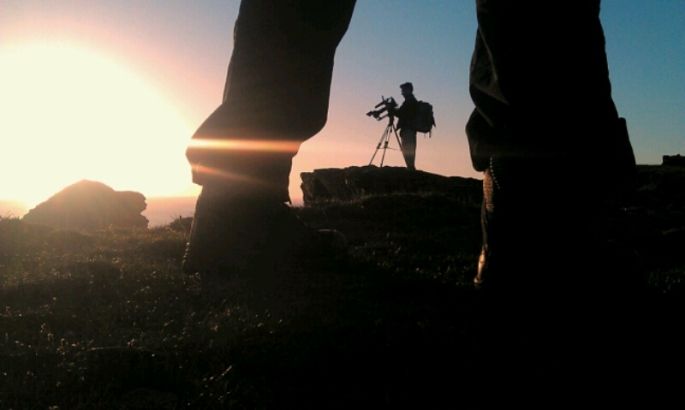
Once Upon a Time in the West: Shooting the Filmaker, Shooting the Sun. Western Cliffs. (Image: Author)
William Donaruma of Notre Dame University accompanied us this year, with some very impressive camera equipment and an even more impressive eye for Malickian light and camera angles. I’ve already linked above to some of his footage from Inishark last year. This year, he shot even more, applying a wonderful slow yet mobile style of filming the excavations and landscape. Scroll down to end of post for some stunning previews of this years footage.
Typical day and light at one of our excavation sites. Hard to believe we were in Ireland most of the time. Costa Del Shark…
One of the more mysterious aspects of the house was this curvilinear stone lined enclosure (top), adjacent a domestic path/platform (bottom) on a vastly different scale and size to that normally done in the early modern period. The placement, facing and ‘feel’ of the stones suggested medieval, but if so, it was significantly reused during later periods – including being used for one side of a drain!
The 18/19th Century house site is close to the medieval Clochán, and in the past has produced a viking soapstone spindlewhorl. Although we weren’t deliberately looking at medieval stuff this year, we did come across some similar soapstone artefacts from the same area that may indeed be of the same medieval vintage:
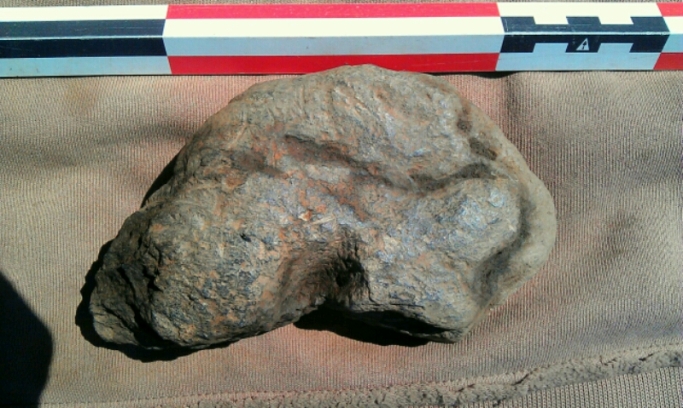
Another unfinished Soapstone Piece. Hole started, but never finished – due to being off centre from each other – presumably snapping the stone (Image: Author)
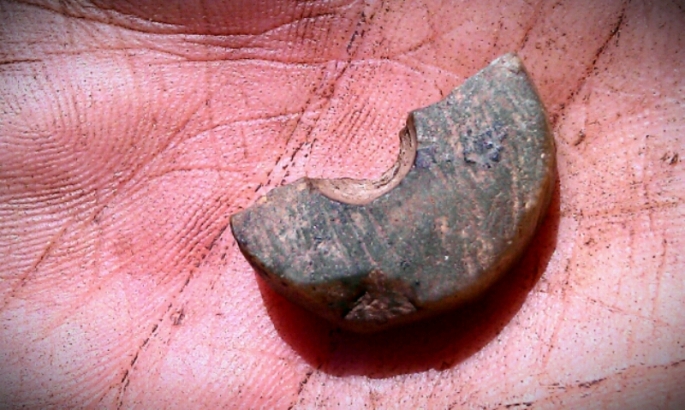
Tiny perforated soapstone piece – again seemingly snapped by drilling through too heavily. (Image: Author)
The star find for me this year was located almost on the surface – halfway up the nearby hill of Cnocán Leo – by my colleagues Elise Alonzi and Ryan Lash. Elise in an ingenious moment of brilliance noticed a tiny notched stone sticking out of the grass and as we usually tend to see them as rough roof tiles, took a closer look…
The location of the above is very interesting, being halfway up the hill in between two pilgrim stations and adjacent a spring. A large quartz pebble was in association. Medieval, or Penal? If it is cross, it’s a little beauty.
————————————————-
For more on our medieval findings on Inishark and beyond over the years, we will be presenting a three paper panel at this years Irish Conference of Medievalists, which happens next week (July 1st, 2014: session 2a) at UCD Dublin.
In the meantime, for an idea of this years adventures, stunning weather and the herculean operation involved in moving 25+ people and their food, water and equipment to an uninhabited island with no electricity and no proper harbour – take a look at this fantastic montage of the 2014 season by William Donaruma:
Yes, I do know how lucky I am 😉
——————————————–
Grateful thanks and appreciation:
Dr. Ian Kuijt, Franc Myles, Dr. Meredith Chesson, Katie Shakour, Meagan Conway, Linda Martellaro, Bill Donaruma and all the 2014 excavation team; Pat Concannon and all the boat boys, Andrew Murray and all at the Doonmore Hotel; Tommy Bourke, Marie Coyne and all the islanders of beautiful Inishbofin who welcome us back every year.
+ + +
In Memoriam
The Islanders of Inishark who have gone before us.
Ní bheidh ár leithéidí arís an.
+ + +



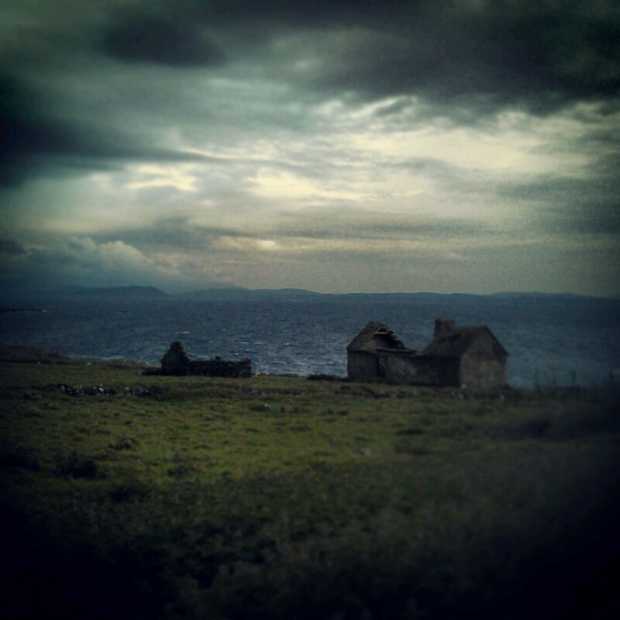
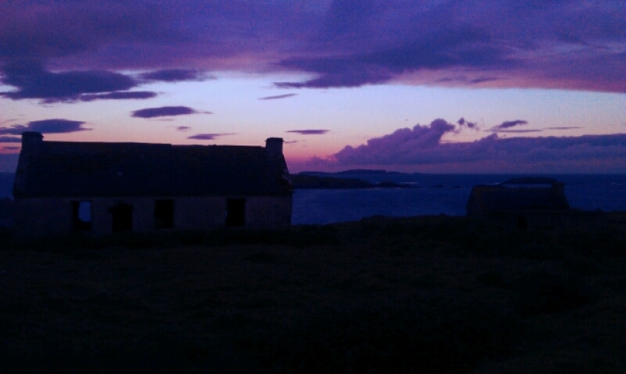

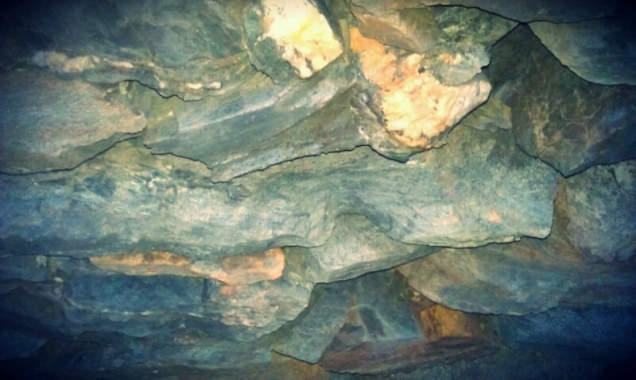


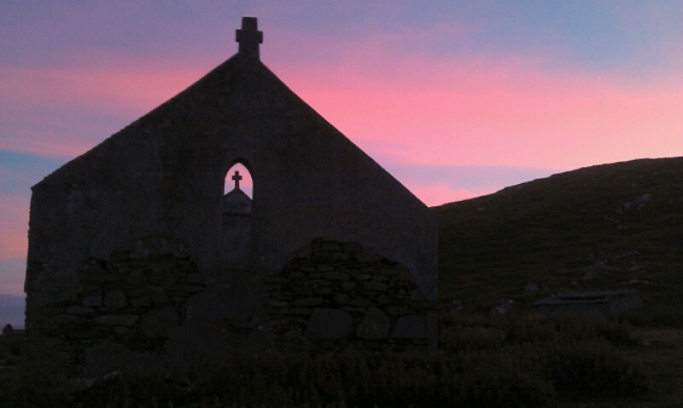

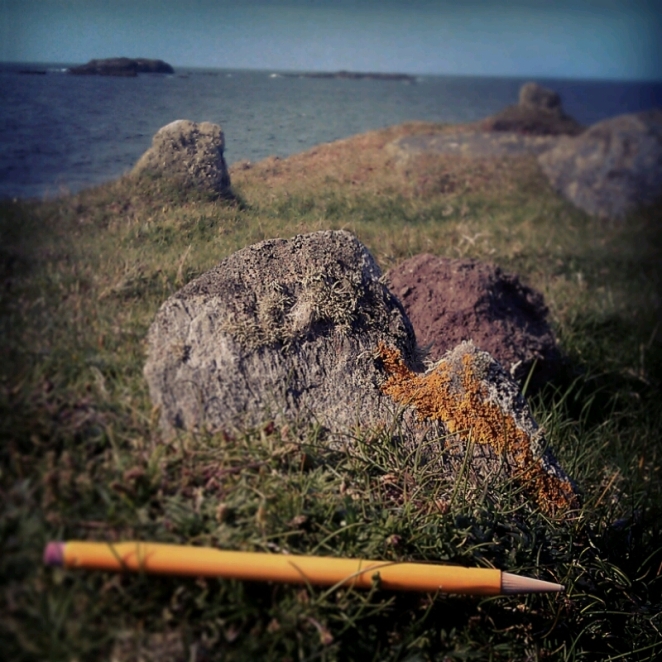
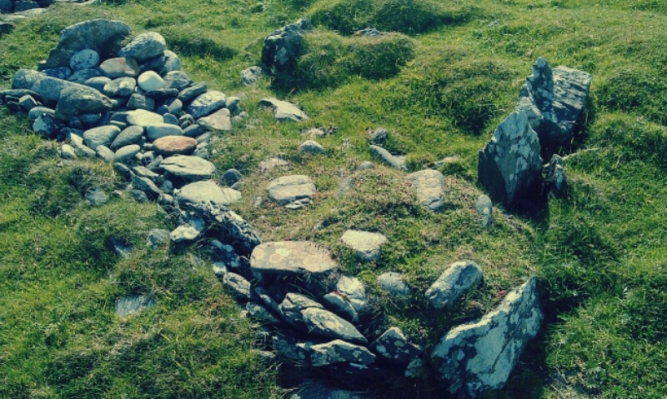
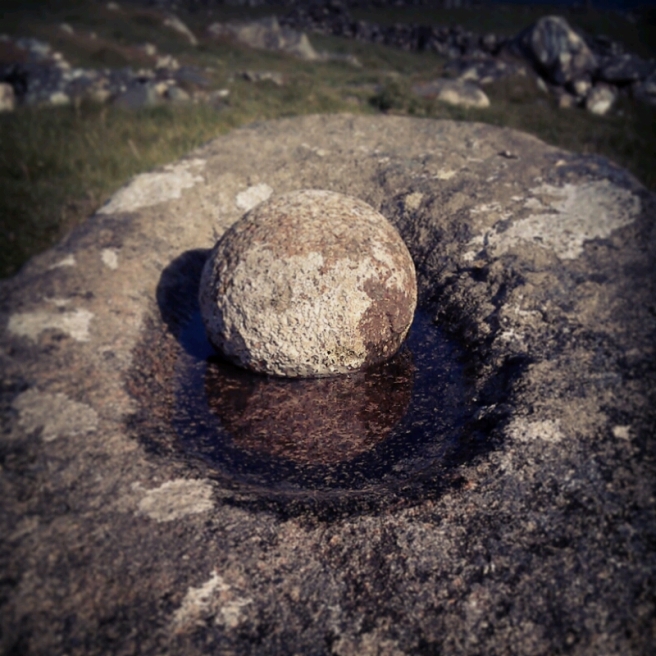
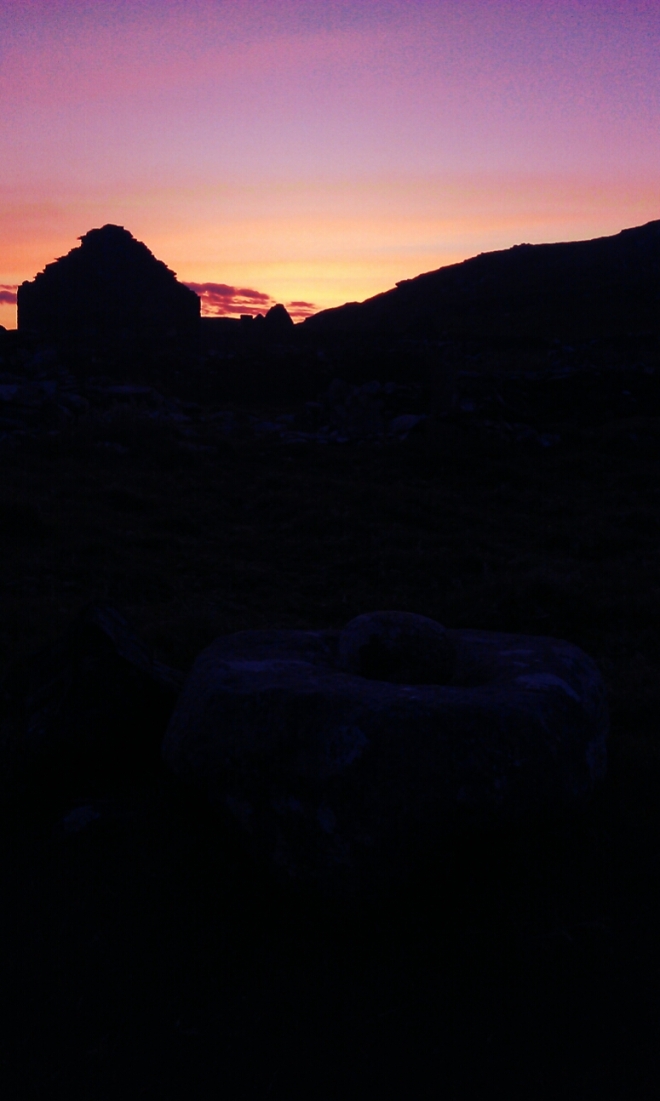

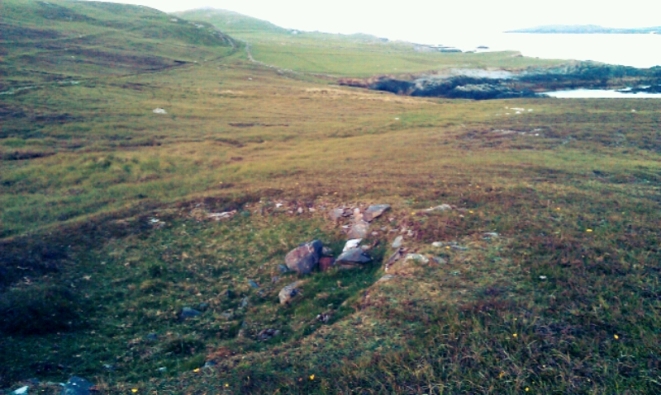


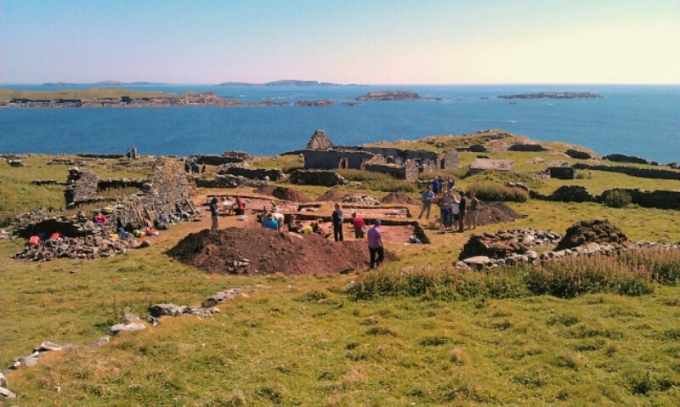
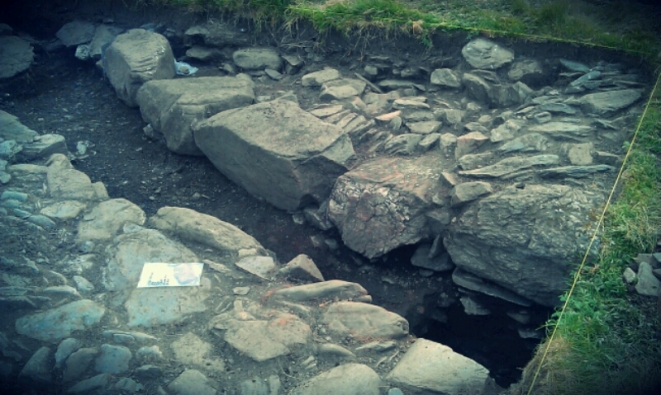


Great video footage Franc! Raging I never got the chance to pay a visit, but the film montage makes up for it somewhat. Looks like a very successful season. Best of luck at the medieval conference!
LikeLike
Not Franc here, but I will pass on the shout. Shame you didn’t make it. You would have taken some great pics! Cheers.
LikeLike
One day I must visit Inishark home to my Hollerans from early 1700s ( Paddy Holleran & I were meant to go & he would show me where they first lived when they moved from Co-Clare & of course I left too late now he is gone RIP thank you so enjoyed this
LikeLike
Glad you enjoyed it. Shame you never got to share it with PH RIP. We were digging quite near the Holleran House, by the way. It’s the nearest roofless one in the background here –> https://www.facebook.com/photo.php?fbid=542709295835670&set=pb.246146295491973.-2207520000.1403793005 and has a resident corncrake within it, this year 🙂
LikeLike
Beautiful images to matched a beautiful place. You were like my well educated field guide in this post…thanks.
LikeLike
You’re very welcome. Thank you for the kind words.
LikeLike
These pictures are incredible. Thank you for sharing them!
LikeLike
Cheers, glad you liked it. Much appreciated.
LikeLiked by 1 person
wow crazy things! do you have any intention to explore other islands like Greenland or Iceland?
LikeLike
Not at present, unfortunately! I’d love to, though. There are fleeting medieval Irish references to the Vikings coming across some Early Irish Monks when they first got to Iceland. You never know…
LikeLike
What an amazing place, takes you to another world…:)
LikeLike
Thanks. Glad you liked it!
LikeLike
Great photos. Congratulations on being Freshly Pressed.
LikeLike
Thanks very much! Cheers.
LikeLike
Strangely beautiful land……~~~been there~~ loved it!!
LikeLike
Aye, it is surely that. Strange AND Beautiful. Cheers!
LikeLike
Very atmospheric.
You might like my poem about St Kilda. It is in the poetry section of my site.
LikeLike
Thanks! And yes, I did. Excellent stuff. Loved the Stone Age Sheep and Ultima Thule. Cheers!
LikeLike
Reblogged this and commented:
It has been many years since I was privileged to set foot on the Emerald Isles, but the memory of the people and the places will always remain fresh as the 32 shades of green so beautiful there.
Their culture and archeological sites are of great value; these are wrapped up in their rich faith history. I cannot think of Ireland but that I do not think of the monks who preserved the gospels for the western world, during the Dark Ages. I hope you find, like the Book of Kells, an archeological find of great renown and great cultural and historical significance.
LikeLike
Many thanks for your kind words. Delighted the ‘aud sod’ made such an impression. Cheers!
LikeLike
I did not go to the island you excavated, but I visited on the “Aran Islands”, further south; there is great history and culture and sites of archeological note that I thought would be lovely to return and investigate.
LikeLike
Ah yes, The Aran’s are lovely. Very similar, except they have gone from strength to strength 🙂
LikeLike
Keep it up. Thanks for the post.
LikeLike
My hubby steven yaniz visited back when he was in his teens and says he has never forgotten the beauty of Ireland’s countryside. We hope to visit together soon!
LikeLike
It does tend to work its magic into ones soul 🙂 Hope you make it over soon too.
LikeLike
What an incredible adventure, your descriptions and images really allowed me to get the feel of this place, and its past. My curiosity is piqued and I will definitely look for more on its history. Thank-you for sharing this!
LikeLike
Thanks for the kind words. My pleasure. Delighted you were piqued.
LikeLike
Your photographs are beautiful and haunting. My main interests are the Roman era and the US Civil War, but I can tell you that your work is greatly appreciated and admired. I am bound for Ireland in a little over a week. I only wish that I knew what beauty lay off the main track.
LikeLike
Cheers mate, appreciate that. Off the beaten track is the way to go, for sure. The real Ireland. Hope you have a great visit 🙂
LikeLike
This is so lovely and powerful; thanks for honoring the islanders and the past with your well-woven words, your beautiful images, and your careful study.
LikeLike
You’re very welcome. Thanks for he kind words, appreciated greatly.
LikeLike
I’ve always heard about how beautiful Ireland is but your photos really bring it to life. There’s something so unique about that land, a feeling I get just from looking at it, something profound and too deep for words. Thanks for sharing your trip.
LikeLike
My pleasure. Cheers. Aye, it has a powerful hold on many, near and far…
LikeLike
Thanks for following my posts. Hope to read more of yours.
LikeLike
Thank you
LikeLike
Very welcome 🙂
LikeLike
A powerful insight to this beautiful land. Wonderful.
LikeLike
Cheers for that, glad you liked it!
LikeLike
Very cool! Fabulous photos. Ireland is an astounding place with an astounding history – many times the length of human history where I live, New Zealand’s, which was not touched by humanity until around 1280. Although, in other ways, the history of Ireland is entwined with modern New Zealand, because so many Irish arrived here during the settler period of the nineteenth century. Many were soldiers from the 65th Regiment. To me, revealing how entwined all human history is becoming – thanks to that century with its unprecedented colonialism; and thanks, too, to social media, for it is here that we can highlight the connections.
LikeLike
These images are wonderful, it is capturing moments of history. What a fabulous opportunity you had, this is just amazing and so beautiful. It’s a land basically frozen in time.
LikeLike
Many thanks. Yes, that’s a nice way of putting it 🙂
LikeLike
My ancestors came from here…yikes!
LikeLike
What’s the name?
LikeLike
Marie, from Ireland or Inishark? My grandmother grew up on the island in the early 1900s, left for American around WWI.
LikeLike
Wow, amazing. I am planning to move to Galway next June and stay for about 12 months. I would love to intern/volunteer on something like this.
LikeLike
Galway is great, you’ll have a ball. Not much chance to volunteer on such projects, I’m afraid. Few and far between. Many also look for a student archaeology background, but you could keep an eye on this site, closer to time: http://www.archaeojobs.com/?m=1
LikeLike
That’s a shame! I don’t have an archaelogy background but I have done some curatorship courses at uni. Thanks for the link, I’ll be sure to keep checking it. Thanks! Jaye.
LikeLike
What a great post. As a student who just took an introduction to Archaeology, I find this a great article. How do you get to experience field work? Do you have to be an Archaeology major to experience such thing?
LikeLike
No, not necessarily, but it usually helps. Depends on the project, whether commercial (CRM), community, fieldschool or research (Uni). Presume you’re in the States? You should google ‘Irish Archaeological Fieldschools’.
LikeLike
Yes, I am in the US. Thank you so much, I will definitely look into that :D.
LikeLike
Stunning
LikeLike
How very interesting. It reminds of the farming towns that were abandoned in the mid north of South Australia in the 1860’s. Though they weren’t on an island like Inishark, it was still an extremely isolated and desolate place to live. The catch cry of the time was ‘ The rain will follow the plough’. It did for about 10 years but continuous drought brought a premature end to many communities in the outback. Only the tough and the willing could or would want to live in such harsh conditions. I will read your blog with interest. Thanks
LikeLike
Thanks for that. I passed through SA a good few years back, didn’t quite make it to the mid north – clung to the coast. Would have loved to see such town remains. I did find a ‘Dublin’, which was the size of a phonebox. Cheers.
LikeLike
Oh I almost forgot about SA,s Dublin just north of Adelaide. Named by some long lost Irishman missing home I suspect to remind of something that wasn’t dry and dusty. Thanks for replying. I shall continue to read your work with interest.
LikeLike
Beautiful piece. Thank you for writing this. I was fascinated and you made the exploration interesting.
LikeLike
Thank you, appreciate that.
LikeLike
Sweet. I love the history of Ireland. I was involved in an arch project at Navan Fort over 10 years ago. It was magical and one of my favorite excavations. Such a rich history!
LikeLike
Nice, the one at Tamlaght?
LikeLike
Lovely atmosphere you create with your pictures. Very special!
LikeLike
My grandad, Thomas Lacey was the last man to leave Inishark. Sadly to say I have never ever visited the island but plan to do so in the near future. Thank you for sharing the great photos.
LikeLike
Maria,
Many thanks, it is a privilege to have his descendents read and find it useful. I have heard the story of that last night many times and often think of him when passing the house on the island. I hope you make it over soon, and perhaps even, when the crew is on the island – so we can show you around ourselves.
LikeLike
Maria, my grandmother was raised there in the early 1900s and left for the states around the first world war. She was a Cloonan. I live in NH now, where are you?
LikeLike
Pingback: Navigatio Hiberionacum: A Modern Day Immram in Ireland | vox hiberionacum
My grandmother, Anne O’Halloran was born here. It is so beautiful, she was so tough.
LikeLiked by 1 person